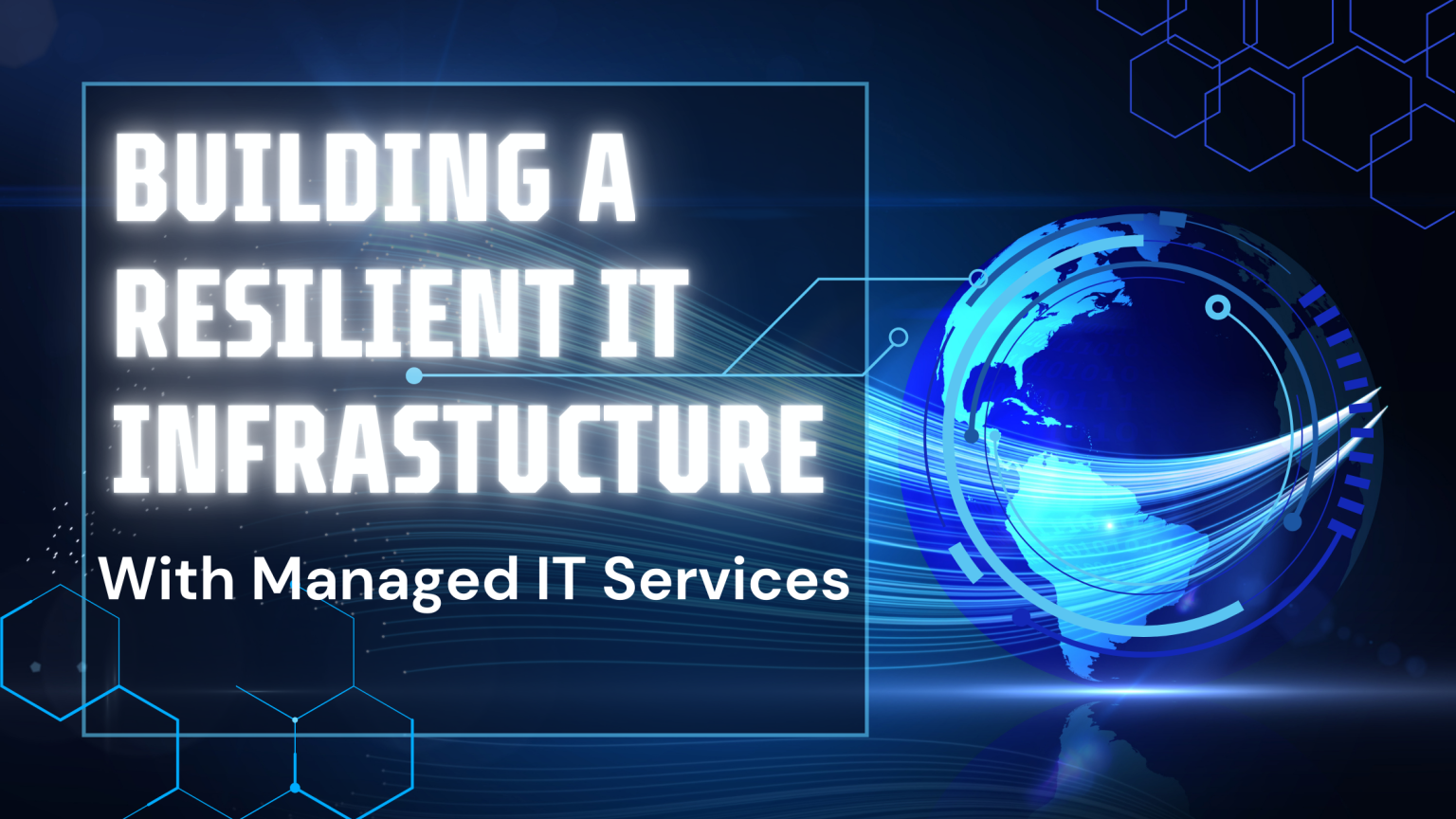
As businesses become increasingly reliant on digital systems, ensuring IT infrastructure is resilient to disruptions is critical for maintaining operations, protecting data, and minimizing downtime. Even a few minutes of downtime can lead to significant losses in productivity and revenue. With cyberattacks on the rise and systems becoming more complex, businesses need a resilient IT infrastructure to stay ahead. Managed IT services play a key role in strengthening IT infrastructure by offering proactive management, continuous monitoring, and robust disaster recovery plans.
What is IT Resilience?
IT resilience refers to the ability of a business’s IT systems to continue functioning during and after disruptions. Whether it’s a cyberattack, hardware failure, or natural disaster, resilience ensures operations can be restored with minimal downtime.
3 Key pillars of IT resilience include:
- Design: a robust systems architecture that are built to handle high levels of stress and potential failures.
- Rapid Recovery: Being able to rapidly recover data, networks, and applications after disruptions.
- Safeguard: Ensure your IT systems can adapt to address and protect against new threats.
The Role of Managed IT Services in IT Resilience
Managed IT Services (MSPs) offer an excellent solution to businesses looking to enhance their IT resilience. By partnering with an MSP, businesses gain access to 24/7 support, proactive monitoring, and fast response times that ensure disruptions are minimized. Here are some of the core ways MSPs help build IT resilience:
- MSPs continuously monitor systems to identify potential issues before they escalate into full-scale disruptions.
- Regular software updates, security patches, and system optimizations are handled by the MSP to ensure that your infrastructure stays resilient.
- MSPs assist with planning and implementing disaster recovery strategies, including data backups and failover solutions.
When planning for resilience, there are several critical factors to keep in mind:
Scalability
As your business grows, so will the demands on your IT infrastructure. It’s important to build systems that can scale efficiently, ensuring that you can add capacity without sacrificing performance. Managed services help by offering scalable cloud-based solutions that can adapt to your needs as they change over time.
Redundancy and Failover Systems
Redundancy is a crucial part of resilience. By having multiple copies of your data and systems in place, you ensure that if one fails, another can take its place. MSPs implement data replication and failover systems to keep operations running smoothly even in the event of a major disruption.
Disaster Recovery (DR), Business Continuity (BC) and Soc 2 Type 2
Disaster recovery and business continuity go hand-in-hand with resilience. A strong disaster recovery plan ensures that your critical data and applications can be restored quickly. MSPs specialize in creating and maintaining DR plans, often leveraging cloud-based backups and automation to ensure fast recovery times. As well, SOC 2 Type 2 evaluates whether an organization has processes in place to recover from potential failures or disasters. Having well-defined recovery plans ensures that businesses can quickly bounce back from incidents, minimizing downtime and enhancing resilience.
Cybersecurity
A resilient IT infrastructure is only as strong as its cybersecurity defenses. From firewalls to encryption and threat detection systems, cybersecurity measures must be integrated into every layer of your infrastructure. Managed services provide continuous monitoring and protection, ensuring that your systems stay secure against both internal and external threats.
Cloud Solutions
Cloud infrastructure has become a key element in building resilient IT systems. Managed service providers often deploy cloud solutions to give businesses flexibility, scalability, and disaster recovery options. By integrating hybrid cloud solutions, MSPs offer the best of both worlds: the security of private data centers and the scalability of public clouds.
Case Study: A Real-World Example of IT Resilience in Action
One example of how MSPs can enhance resilience is through a case where a small retail company located in Port Chester experienced a ransomware attack that threatened to bring down its entire IT system. By partnering with an MSP, the company had a disaster recovery plan in place, allowing them to quickly restore critical data from backups. Thanks to the MSP’s rapid response and expertise, they minimized downtime and were able to return to full operations within hours, avoiding what could have been a costly business interruption.
Building a resilient IT infrastructure isn’t a one-time task—it’s an ongoing process that requires constant monitoring, maintenance, and improvement. By partnering with a Managed Service Provider, businesses gain the tools, expertise, and support they need to protect their infrastructure, mitigate risks, and ensure long-term success.
If your business is ready to fortify its IT infrastructure and ensure resilience in the face of growing threats, contact Systech MSP today. Don’t wait for the next disruption to expose vulnerabilities in your IT infrastructure and let us help you build an IT system that’s as strong and adaptable as your business.
